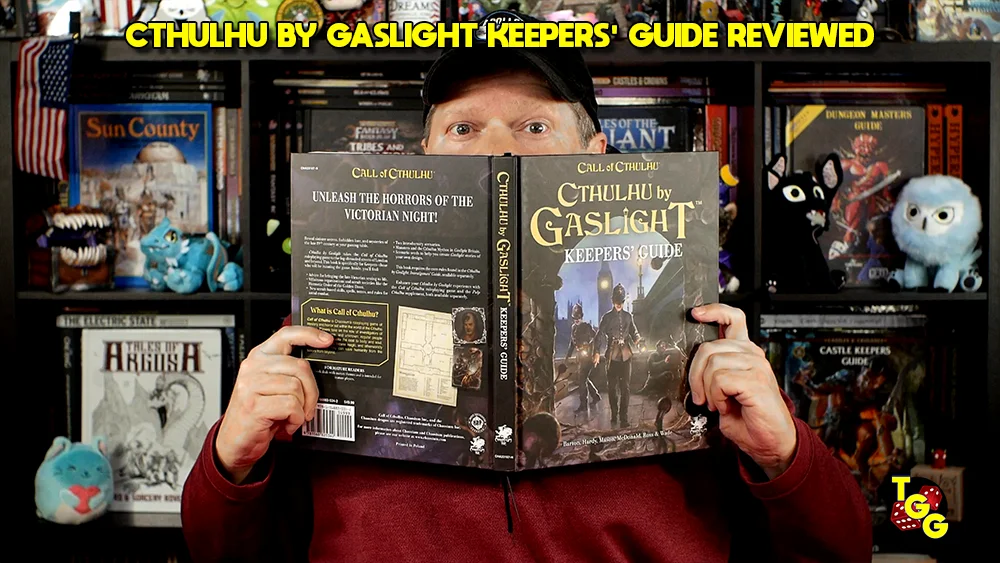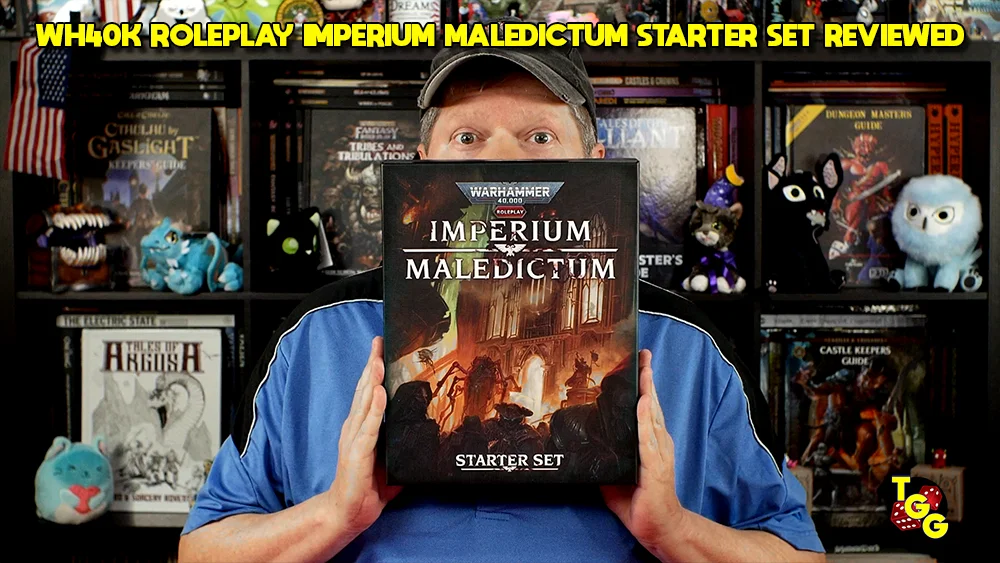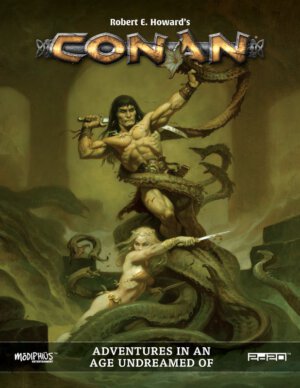
Publisher: Modiphius Entertainment
Authors: Richard August, Timothy Brown, Michael Coker, Rachael Cruz, Vincent Darlage, Jason Durall, Chris Lites, Kevin Ross, Mark Finn, Jeffery Shanks and Monica Valentinelli
Artists: Brom, Daren Bader, Gio Baroni, Simon Bisley, Michal E. Cross, Shen Fei, Toma Feizo Gas, Thomás Giorello, Nick Greenwood, Gunship Revolution, Josh Hass, Mike Hoffman, Alex Horley, Brian LeBlanc, Frédéric Le Martelot, Antonio José Manzanedo Luis, and Fares Maes
Year: 2017
Players: It’s an RPG corebook, so two or more
Ages: 14+ (My opinion)
Playing Time: Ongoing
Genre: Roleplaying game based on the Conan tales of Robert E. Howard
Pages: 432 pages
Retail Price: $24.99 at DriveThruRPG; Physical book coming soon, MSRP approx. $49.99
Roleplayers of every stripe know they need to tip their caps in gratitude to a good number of authors for providing the inspiration behind the creation of fantasy RPGs back in the 1970’s. Beloved names like J.R.R. Tolkien, Jack Vance, Fritz Leiber, and C.S. Lewis immediately spring to mind. Yet one writer who may stand as the most influential of all to gaming is Robert E. Howard, with his own particular brand of sword and sorcery tales. You’d be hard pressed to find nearly any fantastical roleplaying game without at least a hint of Conan the barbarian’s adventures coloring the proceedings. While Howard created memorable pulp characters such as sailor Steve Costigan, Kull of Atlantis, and Solomon Kane, it was the Texan’s Conan the Cimmerian who firmly established the author’s legacy.
Conan, and the Hyborian Age during which the character lives, have long been the subject of previous roleplaying systems over the years including TSR’s Advanced Dungeons & Dragons, Steve Jackson’s GURPS, and Mongoose Publishing’s OGL line. In 2015, Modiphius Entertainment acquired the rights to produce a Conan RPG and, following a 2016 Kickstarter which raised over a half million dollars, the core book Robert E. Howard’s Conan: Adventures in an Age Undreamed Of arrived last month. The initial tome in the game system weighs in at a hefty 432 pages.
As someone who has enjoyed the bulk of Howard’s twenty-one Conan tales, I was eagerly anticipating this release. My Gen Con interview with Chris Birch last year also whetted my appetite to see what Modiphius had in store for gamers too. Having read through the core book I can definitively say fans of Conan, and roleplayers in general, are in for a real treat with Conan: Adventures in an Age Undreamed Of (referred to as Conan:Adventures here on out).
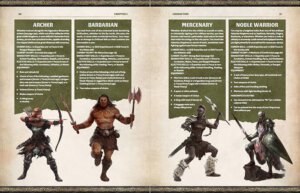
Readers are first introduced to Robert E. Howard and the history of Conan in the pulp magazine Weird Tales and other media. These short essays are nicely presented and get you in the mood to dive right into the Hyborian Age. A few pages are devoted to the obligatory “what is a roleplaying game” sort of rundown as we see in most system core books and then it’s on to character creation.
Conan: Adventures utilizes the 2d20 system found in other settings from Modiphius, most notably Mutant Chronicles. In short, 2d20 resolves action by the players rolling two or more twenty sided dice to determine success or failure. I’ll admit I was a bit surprised when I originally learned the gang at Modiphius weren’t going to build a brand new system from the ground up for Conan but, thankfully, the book doesn’t feel as if square pegs were hammered into round holes simply to to fit into a previously published rule suite.
Creating the player characters is a ten step process and this will take some time to complete. At their core the make up of the PCs consists of four distinct components: attributes, skills, talents, and equipment. The other steps mainly flesh out the characters in order to make them unique. In the following order a player will determine the character’s homeland, attributes, social caste, backstory, archetype, education, war story, add finishing touches, and finally calculate a variety of aspects based on previous steps. I’ll mention creating your alter egos can be a bit tricky so don’t rush through the process.
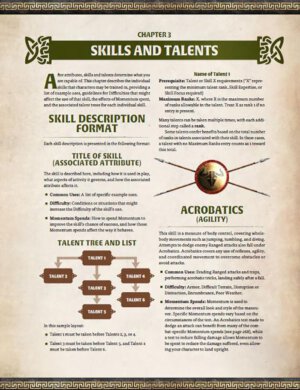
The core mechanic for resolving action is rolling 2d20 equal to, or less, than the appropriate attribute + expertise; the more difficult an action, the more twenty sided dice the player will have to roll. Combat runs in a similar vein with the inclusion of six sided dice as well as an optional d20 to determine hit location. The six sided dice determine damage dealt with possible results of zero, one, two, or one as well as an effect. As an example, if a weapon with a rating of four were to strike home the damage could range from zero to eight (as well as possible additional effects) minus what’s called soak. Soak can be anything from the defender’s armor, fighting behind cover, or even morale. Some soak is constant (armor) while other forms of soak can change (say morale or cover) and might require a roll of combat dice to find how much damage is absorbed. Conan: Adventures doesn’t quite use a hit point system but rather accounts for wounds. Each wound makes subsequent physical attribute rolls more difficult. Most humans receiving four wounds can barely move and will pass on into the afterlife if they receive five.
There’s obviously much more to the combat system, as well as the core mechanics, of Conan: Adventures but my aim here is to simply provide a quick overview rather than rehash every small detail; I strongly recommend downloading the absolutely free fifty-two page quickstart rules of the game for more of the nitty gritty mechanics-wise. One aspect of the game I’ll also mention is the various point pools both the players and GM can draw from to heighten the action and these are fortune, momentum, and doom.
Each character will begin with three fortune points (but never more than five) which may be used to provide bonuses to rolls, perform unique actions, or even influence the story. Momentum is a group pool which increases as players succeed above and beyond a required skill test; each additional success earns the group one momentum point, up to a maximum of six. Momentum has a variety of uses ranging from boosting skill tests, improving the results of a successful test, as well as other beneficial bonuses devised by the players and GM. The game master also has a pool they may draw from and that would be doom. Doom is relatively abstract but consider it as a counter balance to fortune and momentum. The GM 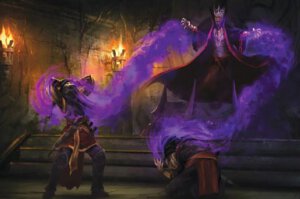
Sorcery is dealt with in some detail with its own chapter. Keep in mind the Conan stories mainly paint sorcery as dark and deadly arts and the game tackles magic in this way too; while most characters may dabble a bit, many of the truly experienced practitioners of an eldritch path will normally be dastardly villains possessing barely a shred of sanity. This isn’t to say characters can’t veer toward shamanic, alchemy, or “white magics” but suffice to say most really powerful sorcery can be looked at as evil, requiring foul deeds (torture or human sacrifice) to bring spells to fruition. I especially like the approach taken by Conan: Adventures toward magic and it’s important for players to keep in mind, although nothing in the rules states characters can’t become evil mages, heroic adventurers probably won’t travel too far down most sorcery skill trees.
Plenty of information is included in the corebook regarding weapons, armor, and equipment of the Hyborian Age. This isn’t a vast armory and some items aren’t thoroughly detailed (ships will no doubt be tackled in much greater depth in the supplements dealing with Conan’s life as a pirate as an example) but there’s plenty here outside of just some basic gear. Personal property and possible magic items are discussed as well.
As in a great many RPGs, characters advance by way of experience points. Unlike other games, there are no hard or fast rules regarding how a GM doles out XPs though and a typical game session should see players each net between 100-300 XP. Character 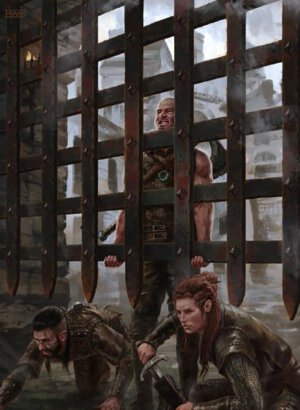
I’ll freely admit, prior to picking up Conan: Adventures, I had very little knowledge of the 2d20 system. Upon reading this core book, I have to say it’s a really interesting RPG system. It’s a bit crunchy but I was honestly expecting that seeing the aim is to mimic much of the style of Howard’s Conan tales. I will mention, although the system is quite different at its core, 2d20 isn’t any more difficult to wrap one’s head around than either Pathfinder or the most recent edition of Dungeons & Dragons.
My favorite sections of Conan: Adventures deal with running the game and delving into the setting of the Hyborian Age. Over half the core book is devoted to the Hyborian world, effectively running adventures within that world, as well as who or what the characters may encounter throughout the lands. A great deal of thought is provided as to “what would Howard do?” regarding the style and scope of adventures GMs can concoct for the players. The original Conan stories run a wide gamut from high octane action, to hidden politics of royal courts, to sword and sorcery, to weird tales of horror. Game masters are encouraged to take their players on unexpected thrill rides much in the same way as Robert E. Howard did with his readers in the 1930’s. If everyone around the table prefers to focus on one or two particular styles, that’s quite alright too since Conan: Adventures really is your game to make of it what you will.
Although the corebook is a hefty one, at well over four hundred pages, I can’t say it’s an exhaustive tome. On one hand, Howard wrote a good number of Conan stories so there’s far more territory to cover in depth than one could expect to find in a single game book. On the other hand, Modiphius has around twenty supplemental books in the pipeline which cover every aspect of Conan’s travels and adventuring career (pirate, soldier, thief, king, etc) so obviously the company would like you to purchase those in the future. Although the gazetteer covering the lands, peoples, and creatures of the Hyborian Age isn’t hundreds of pages you won’t feel cheated as there’s still plenty here to get you started.
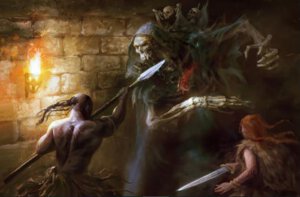
I don’t consider myself a Conan historian by any stretch, although I’ve reread the original stories (and enjoyed audiobook narrations) over the years, but I will say I’m intimately familiar with Howard’s tales. That said, there have been a good number of Conan RPGs in the past but I’ve never run across a roleplaying product devoted to the Cimmerian barbarian quite like Conan: Adventures. Everything about the corebook is first rate and the real love the team behind the game has for Howard’s stories shines through on each page.
Conan Adventures isn’t aimed at being an end-all-be-all fantasy roleplaying game for all stripes of gamers. Those looking for a more generic system, where the Hyborian Age can simply be hung as window dressing or the character of Conan shoehorned into a high fantasy setting of elves and dwarves, will no doubt want to look elsewhere. If you happen to be a fan of Robert E. Howard’s barbarian, and want to enjoy a game which is firmly entrenched in not only the Texan’s fictional world but also the very style and essence which made the Conan tales classics, Conan: Adventures in an Age Undreamed Of is a must buy. Major kudos to the team at Modiphius Entertainment as they’ve created what is certainly the definitive Conan RPG and a beautiful sight to behold. By Crom!
[rwp-review id=”0″]










